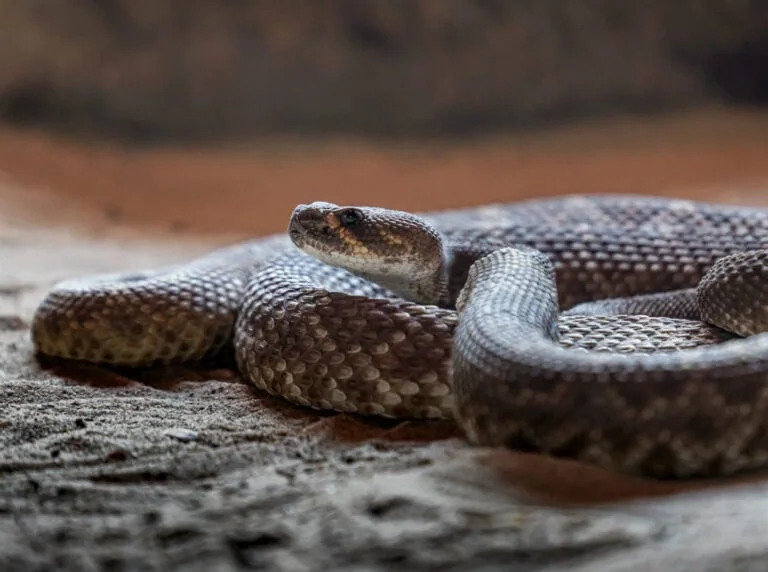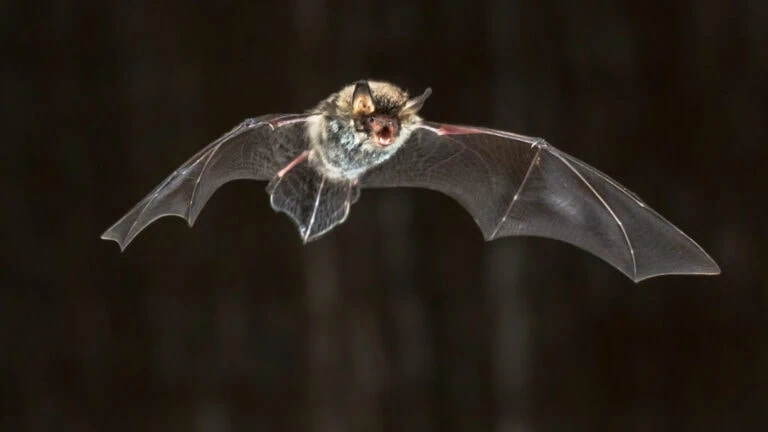Dealing with unwanted critters in your home can be a frustrating and even scary experience. Whether it’s the pitter-patter of squirrels in your attic or the sight of raccoons rummaging through your garbage, knowing how to get rid of critters effectively and humanely is essential. In this guide, we’ll walk you through everything you need to know to keep your home critter-free for good.

Understanding Common Household Critters
Before diving into the “How To Remove Critters”, it’s crucial to understand the common critters that might invade your home. Each has its unique behaviors and challenges.
Types of Common Critters
Raccoons: Known for their dexterity and intelligence, raccoons can open trash cans, doors, and even windows. I once had a raccoon that figured out how to open our patio door and sneak in for snacks!
Squirrels: These agile creatures can chew through almost anything, including wires and insulation, making them a fire hazard.
Rodents (Mice and Rats): Small but mighty, these critters can squeeze through tiny openings and cause significant damage and health risks.
Bats: While beneficial for insect control, bats can create messes and pose health risks if they decide to roost in your attic.
Signs of Wildlife Infestation
Knowing the signs of a wildlife infestation can help you take action early. Look for:
- Unusual noises in the attic or walls.
- Droppings or urine stains.
- Chewed wires or wood.
- Disturbed trash or food stores.
Risks Posed by Wildlife
Critters can pose various risks, including:
- Health Risks: Diseases like Hantavirus, rabies, and leptospirosis can be transmitted to humans.
- Property Damage: Structural damage from chewing, nesting, and droppings.
- Safety Concerns: The presence of aggressive animals or those carrying parasites like ticks and fleas.
Preventive Measures
The best way to deal with critters is to prevent them from getting into your home in the first place. Here are some effective preventive measures.
Seal Entry Points
Critters can squeeze through surprisingly small spaces and often times cause significant damage. Inspect your home for potential entry points and seal them up.
- Cracks and Holes: Use caulk, steel wool, or mesh to seal cracks and holes in walls, foundations, and around windows and doors.
- Chimneys and Vents: Install chimney caps and vent covers to keep out birds and bats. We once had a bat problem, and a simple chimney cap solved it!
Proper Waste Management
Critters are often attracted to easy food sources. Proper waste management is key.
- Secure Trash Cans: Use lids that lock or are heavy enough that animals can’t knock them over.
- Timely Disposal: Dispose of garbage regularly and keep it in sealed containers.
Yard Maintenance
A well-maintained yard can deter critters from setting up camp.
- Trimming Trees: Trim branches that are close to your home to prevent critters from jumping onto your roof.
- Clean Surroundings: Keep your yard free of debris, fallen fruit, and pet food.
Use of Barriers and Fencing
Barriers can be an effective deterrent for larger animals.
- Fencing: Use hardware cloth or chicken wire to fence off gardens and compost piles.
- Chimney Caps: Install caps on chimneys to prevent critters from entering.
Humane Wildlife Removal Techniques
If you already have critters in your home, humane removal is the best approach.
Live Trapping and Relocation
Live trapping is an effective way to remove larger critters like raccoons and squirrels.
- Setting Traps: Use bait that attracts the specific critter you’re dealing with. Peanut butter works wonders for raccoons and squirrels.
- Ethical Relocation: Once trapped, relocate the animal at least 10 miles away to prevent it from returning. We had a family of raccoons that kept coming back until we moved them far enough away.
Exclusion Techniques
Exclusion techniques help remove critters without harming them.
- One-Way Doors: Install one-way doors that allow critters to exit but not re-enter.
- Deterrents: Use devices that emit light, sound, or scent to deter animals from returning.
Using Natural Deterrents
Natural deterrents can sometimes be effective and safe for your home and family. When exploring how to remove critters from your home, it is always recommended to consult a critter removal professional.
- Essential Oils: Oils like peppermint, eucalyptus, and clove can deter rodents and insects. Just place cotton balls soaked in the oil around entry points.
- Predator Urine: Using predator urine (like coyote or fox) can scare off smaller animals like rabbits and squirrels. It might sound odd, but it works!
Professional Wildlife Removal Services
Sometimes, it’s best to call in the pros. Here’s when and why you might need professional help for critter removal
When to Call a Professional
- Severity of Infestation: If you have a significant infestation or multiple types of critters.
- Danger to Humans: If the critter is aggressive or potentially dangerous, like a rabid raccoon or a large bat colony.
What to Expect from Professional Services
Professional wildlife removal services typically offer:
- Inspection: Thorough inspection of your home to identify the extent of the infestation and entry points.
- Removal: Safe and humane removal of the critters.
- Prevention Tips: Advice on preventing future infestations.
Choosing the Right Service Provider
When selecting a wildlife removal service:
- Check Certifications: Ensure they are licensed and certified for wildlife control.
- Review Experience: Look for companies with a proven track record and good reviews.
- Ask About Methods: Ensure they use humane and effective removal methods.
Long-term Wildlife Management Strategies
Preventing future infestations requires ongoing efforts and vigilance.
Regular Inspections
Schedule regular inspections of your home to catch potential issues early.
- What to Look For: Check for new cracks, droppings, and other signs of critters.
- Inspection Schedule: Perform inspections at least twice a year, preferably in spring and fall.
Ongoing Property Maintenance
Regular maintenance can help keep critters at bay.
- Seasonal Tips: Adjust your strategies with the seasons, such as trimming back vegetation in spring and securing your home for winter.
- Upkeep Routines: Keep up with regular repairs and cleaning to eliminate potential attractants.
Wildlife-proofing Your Home
Advanced techniques and materials can provide extra protection.
- Advanced Techniques: Use metal flashing around vulnerable areas, install critter-proof screens, and consider investing in professional wildlife-proofing services.
- Materials: Opt for durable materials like metal and concrete that critters can’t chew through easily.
Legal and Ethical Considerations
It’s important to handle wildlife removal in a legal and ethical manner.
Wildlife Protection Laws
Many critters are protected by law, and harming them can lead to hefty fines.
- Local Regulations: Check local regulations to ensure compliance.
- Protected Species: Be aware of species that are protected and require special handling.
Ethical Removal Practices
Humane treatment of wildlife is essential for ethical removal.
- Humane Methods: Use non-lethal methods whenever possible.
- Ethical Considerations: Consider the well-being of the animal and its role in the ecosystem.
Permits and Licensing
Certain wildlife removal activities may require permits or licensing.
- Required Permits: Check if you need a permit for trapping or relocating certain animals.
- Hiring Licensed Professionals: Ensure the professionals you hire are licensed for wildlife removal.
Frequently Asked Questions (FAQs)
Common Concerns Addressed
Q: How do I know if I have a critter problem?
A: Look for signs like droppings, noises in walls, and chewed materials.
Q: Is it safe to handle wildlife removal on my own?
A: While many believe they will save money by using DIY methods. Often times it is much safer and cost effective to hire a professional that you trust.
Q: How can I prevent critters from coming back?
A: Regular maintenance, sealing entry points, and proper waste management are key.
Quick Tips and Answers
Q: What’s the best bait for trapping raccoons?
A: Peanut butter and marshmallows are great options!
Q: Can I use mothballs to deter animals?
A: Mothballs do not deter animals and they are not recommended as they can be toxic to pets and humans.
Q: How far should I relocate a trapped animal?
A: You should never attempt to relocate a trapped animal unless you are familiar with the laws and regulations surrounding that specific animal.
Conclusion
Getting rid of critters for good requires a combination of prevention, humane removal, and ongoing maintenance. By following the tips and techniques outlined in this guide, you can keep your home critter-free and ensure a safe, healthy environment for you and your family.
If you’re ever in doubt or dealing with a severe infestation, don’t hesitate to contact a professional wildlife removal service like Coastal Wildlife & Pest Services. We’re here to help you keep your home safe and critter-free.
Additional Resources
- Contact Information for Professional Services:
- Coastal Wildlife & Pest Services: Contact Us



